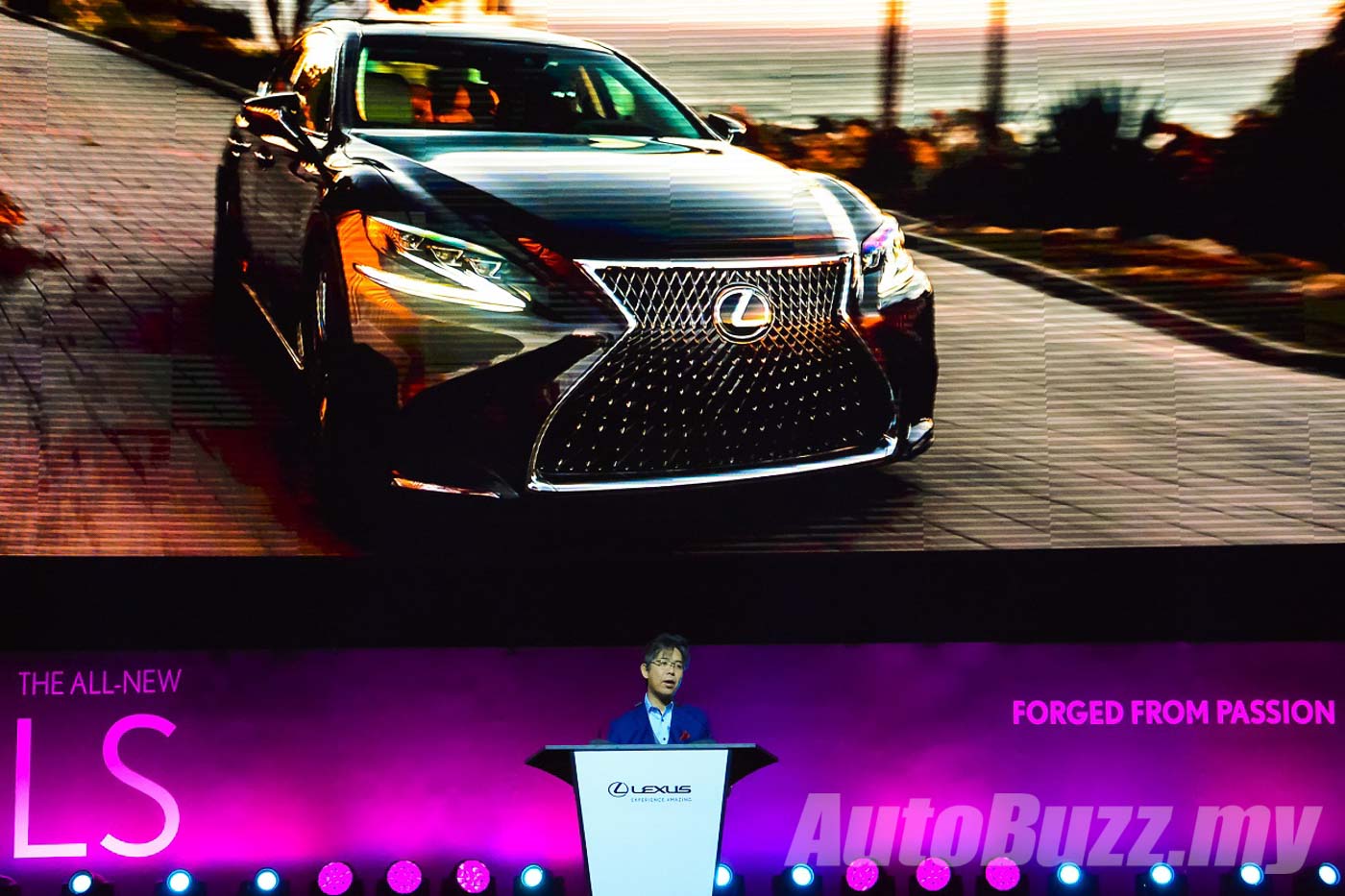As part of the launch of the fifth-generation Lexus LS500 and LS500h in Malaysia, Chief Engineer Toshio Asahi shared his insights with Autobuzz.my on the Lexus flagship saloon, and why Japanese design, hospitality and craftsmanship will always be inherent in every Lexus.
What are the features you would emphasize in the new LS?
The new LS is our flagship model; in addition to its design, it is a chauffeur-driven car in many instances, so we would like to emphasize the features when it is used for that application, but at the same time, we also want to place emphasis on the joy of driving the car itself.
What were the steps taken to make the optional Kiriko glass door trim safe for automotive use?
We did two things. Firstly, we used reinforced glass which makes it harder to crack and in addition to that, we also applied a film on the surface. In a worst-case scenario, if it were to crack, the pieces won’t shatter.
Which cars were the LS benchmarked against?
We benchmarked the new LS against the Mercedes-Benz S-Class, BMW 7-Series, Audi A8 as well as the Tesla Model S.
Why a 3.5L V6 instead of a V8 engine for the new LS?
When we consider the future, five to 10 years ahead of us, as far as the LS segment is concerned, we felt that we needed to take into consideration social as well as environmental factors. Naturally, there are certain demands from our customers, but the reason we chose a V6 engine is that we wanted to make sure the LS could perform better in terms of emission requirements, while matching the capabilities of a V8.
By combining high speed combustion with a high efficiency turbo, and in tandem with the newly-developed 10-speed automatic transmission, we were able to achieve the same power output as the V8 while having better fuel efficiency.
Competitors such as BMW are already offering plug-in hybrid models with respectable electric-power range. What is the rationale of Lexus to only offer a self-charging hybrid system on the LS with lesser electric range? Does Lexus have any plans to offer plug-in hybrids?
The new LS incorporates the Multi-Stage Hybrid. With the conventional hybrid system, although it has great fuel consumption, in terms of feeling of drive, it was somewhat inferior because you step on the accelerator and then you can feel the rotation kicking in, and then only the acceleration would follow. With our multi-stage hybrid, the response is great and as a result, it is a fun driving experience – that was the first thing we did with this hybrid system.
As for future powertrains, we are looking into plug-ins, full-electric as well as fuel cells versions. We hope to be able to introduce these as we go forward.
Would there be any change to the design of the spindle grille in the future?
The spindle grille a design icon for Lexus, just like what the kidney grille is to BMW. We believe that a design icon is something that should be used on a continual basis because that equates to the brand’s character.
We live in a technology age where new things become outdated very quickly. Do you think that the craftmanship in Lexus is still as relevant and appreciated today as it was in 1989 when the first LS was launched?
Difficult question. I had the opportunity to meet with many members of the press as well as customers during events in relation to the new LS. As far as users of luxury cars or those who have interest in them are concerned, they are very interested in the story behind the car – in how much work and effort has been put into it to come up with the final product. In that sense, Takumi craftsmanship is something that is appealing to them and we feel that when we talk about Takumi craftsmanship, you cannot separate it from the unique Japanese characteristics you find in Omotenashi (the Japanese spirit of hospitality) as well as traditional aesthetics – it is tied in with each other. And even though the world may change, the appreciation for these kinds of things remain unwavering and continues to be an appealing factor.
(Toshio Asahi joined Toyota Motor Corporation in 1991 where he was an integral part of the team that designed and launched the first-generation Lexus sedan. In 1992, he was tasked with developing the smart key system for the third-generation LS and Toyota’s first push-start system. In 2002, Asahi worked on the concept planning for the fourth-generation LS and thereafter on the fifth- and sixth-generation ES sedan where he took on the responsibilities as the Deputy Chief Engineer of those models. In 2014, Asahi assumed the position of Chief Engineer for the fifth-generation LS.)








